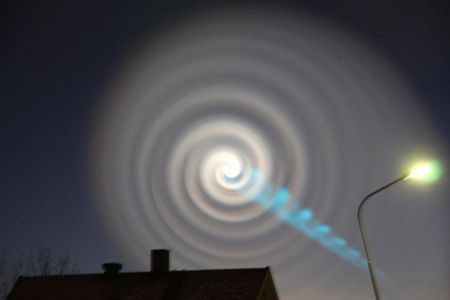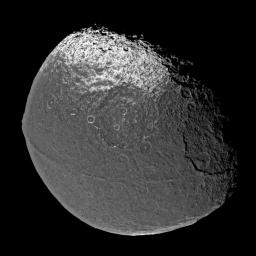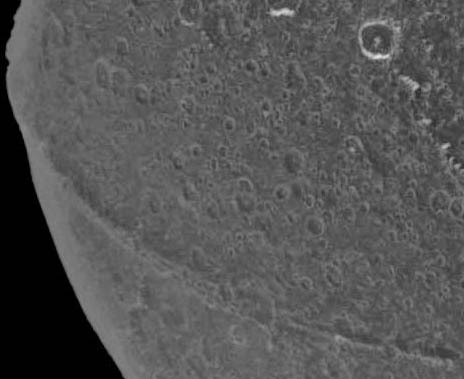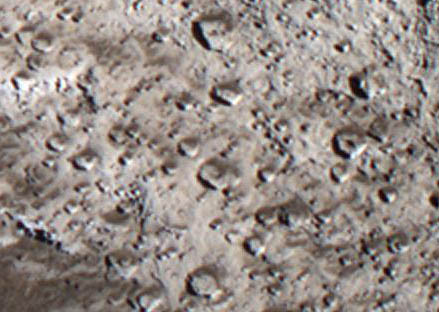Some people just don’t care about outer space. Even the smartest, most curious folk sometimes suffer a precipitous drop-off in interest when the subject matter shifts beyond the earth’s atmosphere. Like Sherlock Holmes, from A Study in Scarlet:
His ignorance was as remarkable as his knowledge. Of contemporary literature, philosophy and politics he appeared to know next to nothing. Upon my quoting Thomas Carlyle, he inquired in the naivest way who he might be and what he had done. My surprise reached a climax, however, when I found incidentally that he was ignorant of the Copernican Theory and of the composition of the Solar System. That any civilized human being in this nineteenth century should not be aware that the earth travelled round the sun appeared to me to be such an extraordinary fact that I could hardly realize it.
“You appear to be astonished,” he said, smiling at my expression of surprise. “Now that I do know it I shall do my best to forget it.”
“To forget it!”
“You see,” he explained, “I consider that a man’s brain originally is like a little empty attic, and you have to stock it with such furniture as you choose. A fool takes in all the lumber of every sort that he comes across, so that the knowledge which might be useful to him gets crowded out, or at best is jumbled up with a lot of other things, so that he has a difficulty in laying his hands upon it. Now the skilful workman is very careful indeed as to what he takes into his brain-attic. He will have nothing but the tools which may help him in doing his work, but of these he has a large assortment, and all in the most perfect order. It is a mistake to think that that little room has elastic walls and can distend to any extent. Depend upon it there comes a time when for every addition of knowledge you forget something that you knew before. It is of the highest importance, therefore, not to have useless facts elbowing out the useful ones.”
“But the Solar System!” I protested.
“What the deuce is it to me?” he interrupted impatiently: “you say that we go round the sun. If we went round the moon it would not make a pennyworth of difference to me or to my work.”
(Though see this site for a second opinion on Dr. Watson’s diagnosis of Holmes’ astronomical ignorance: The astronomical Holmes.)
Anyway, the fact is that you will sometimes find an intellectual who gets really snarky when talking about extraterrestrial subject matter. Like Lee Siegel, TV critic for The Nation. Here’s an excerpt from Alien nation, his review of an upcoming Peter Jennings special on ABC that apparently gives sympathetic treatment to the idea that we’re being visited by aliens:
Jennings is very respectful to the “witnesses” who claim to have seen aliens flying over their barnyards, etc., or who insist that they’ve been abducted (they should be so lucky). There is something in Jennings’s open attitude to all of this of the new deference to so-called religious people that suddenly seized the commentating classes after the election last November. These UFO true believers, after all, are animated by some kind of religious-ish impulse, some thirst for ultimates; or maybe some wish to be jolted out of their dulled senses. In that sense, they are also like generations of vanguard artists, yearning to shock and be shocked.
But there is something else in Jennings’s preening solemn tones (his megalomania is extraterrestrial; so is his tendency to pronounce words like “project” two different ways). There is in Jennings’s voice this surging American love for the absurd, and therefore contemptible person. From politics to reality shows, we seem to like to be surrounded by people ruled by greed, hampered by stupidity, blinkered by obsession. These sad bored UFOers, their faces blank, their land-locked figures full-sail with heartland obesity, their eyes shining with their earth-centric, mundane, child’s fantasy of a populated universe–the spatial, secular version of the religious, temporal dream of a populated eternity–these people are easy to laugh at, and therefore easy to accommodate.
When my friend Arktos (who goes by J.A.Y.S.O.N. when he shows up at lies.com) saw this piece, it bothered him:
Behind you! Arktos!
Arktos says to you, “thats mean”
You say to Arktos, “what’s mean?”
Arktos says to you, “the ufo thing”
Arktos says to you, “and the heartland obesity thing”
You scratch your head in thought.
You say to Arktos, “what ufo thing?”
You say to Arktos, “oh, the alien nation article by lee siegel?”
Arktos nods to you.
Arktos says to you, “yeah, i wanted to write, ‘dear guy, sorry for not believing the same things you do, i’m clearly stupid, and also i’m sorry for being fat and living in ohio'”
You say to Arktos, “ah. I didn’t realize you were a Believer in UFO visitation.”
Arktos says to you, “let me put it to you like this”
Arktos says to you, “i’m a fortean, i acknowledge the possibility, but like i more just hate smarmy fucking writers”
Arktos says to you, “i understand that people are bad about the ufo thing, but like, that guy is an ass”
This led to a long (too long, I’m sure, in the view of many who witnessed it) discussion of the possibility/probability of life existing beyond earth. Once we got past the fireworks, it eventually emerged (I think) that we both basically hold the same view (that we don’t have any idea, really), and only diverge in terms of which of the two alternatives (there is life beyond earth, or there isn’t life beyond earth) we find more outré.
For those who like to assert, however, as Arktos seemed to be doing during the initial phase of our discussion, that the nearly infinite number of worlds out there makes it virtually certain that life has originated more than once, let me offer the following analogy:
Imagine a die with an unknown number of sides, with that number of sides represented by X. (Former D&D players will have no problem with this part.) The sides are numbered sequentially, from 1 up to X. We’re walking along, and we happen to come upon this die resting on the ground with a 1 showing on its upper face. Now ask yourself: Without knowing how many sides the die has (that is, without knowing the value of X), and without knowing how many times the die is going to be rolled (which we’ll call Y), can you predict the likelihood that a 1 will be rolled again?
The answer clearly is no, you can’t. In fact, even if you know that Y (which in this analogy could be equated with the number of places beyond earth that are suitable for life) is a very large number (as it surely is), you still can’t say anything about the probability of another 1 being rolled without knowing something about the value of X (which I’m letting stand for the probability that, given a place suitable for life, life will actually emerge there — which readers who share my obsession with this stuff will recognize as the term f-sub-l from the infamous Drake equation.)
Janus/Onan tried to shoot this down with the following:
Janus says to you, “Well, no.”
Janus says to you, “If you’re going to insist upon an artificially estimation-poor model, then the case for life elsewhere actually gets vastly stronger.”
Janus says to you, “100% of the planets with which we’ve had nontrivial experience have been teeming with life. Therefore, it’s only reasonable to extrapolate that around 100% of all others are.”
But as I pointed out in response, that doesn’t wash. You can’t take the presence of life on earth as a suitable basis for extrapolation, because the fact that we’re even here to do the extrapolating requires that we be on a planet suitable for life. (See the anthropic principle.) The presence of life on earth tells us that there is, in fact, a 1 on one face of the die, and that it was rolled at least once. It tells us that the emergence of life is possible. It doesn’t tell us how likely that event is.
See, sticking with the analogy, we don’t get to even consider the question until a 1 has been rolled (because until then, there’s no one to do the considering). So the fact that we’ve got that single case of a 1 having been rolled really tells us nothing, beyond the fact that the probability of rolling a 1 is greater than zero. But again, since we don’t know the value of X (the number of sides of the die), we can’t say whether the chances of rolling 1 a second time in Y tries is astronomically high, astronomically low, or somewhere in between.
We just don’t know.
Proceeding scientifically, there are two possible hypotheses: A: Life has emerged exactly once in the universe. B: Life has emerged more than once in the universe. The presence of life in a single place in the universe (on earth, that is) is accounted for equally well by both hypotheses. If you want to argue that one or the other hypothesis is more likely than the other, you’re going to need more data.
To date, we really don’t have that data. A small number of people have reported seeing alien spacecraft, and even being abducted and probed, but at this point it’s not clear to me that that counts as evidence of anything other than the weirdness of people, generally. And we’ve done SETI listening with radio telescopes, and landed probes on a few nearby planets and moons, without turning up any compelling evidence of life (so far).
I’m rambling; sorry. Let’s finish this up with another Holmes quote, this time from The Second Stain:
“You are off?”
“Yes, I will while away the morning at Godolphin Street with our friends of the regular establishment. With Eduardo Lucas lies the solution of our problem, though I must admit that I have not an inkling as to what form it may take. It is a capital mistake to theorize in advance of the facts. Do you stay on guard, my good Watson, and receive any fresh visitors. I’ll join you at lunch if I am able.”
Those who currently claim it is “probable” (or even “virtually certain”) that there is life beyond earth are theorizing in advance of the facts. In effect, they are manifesting a religious faith in things unseen. Which is fine. I’m cool with faith. But it’s not science. And at least for the moment, it doesn’t persuade me.





